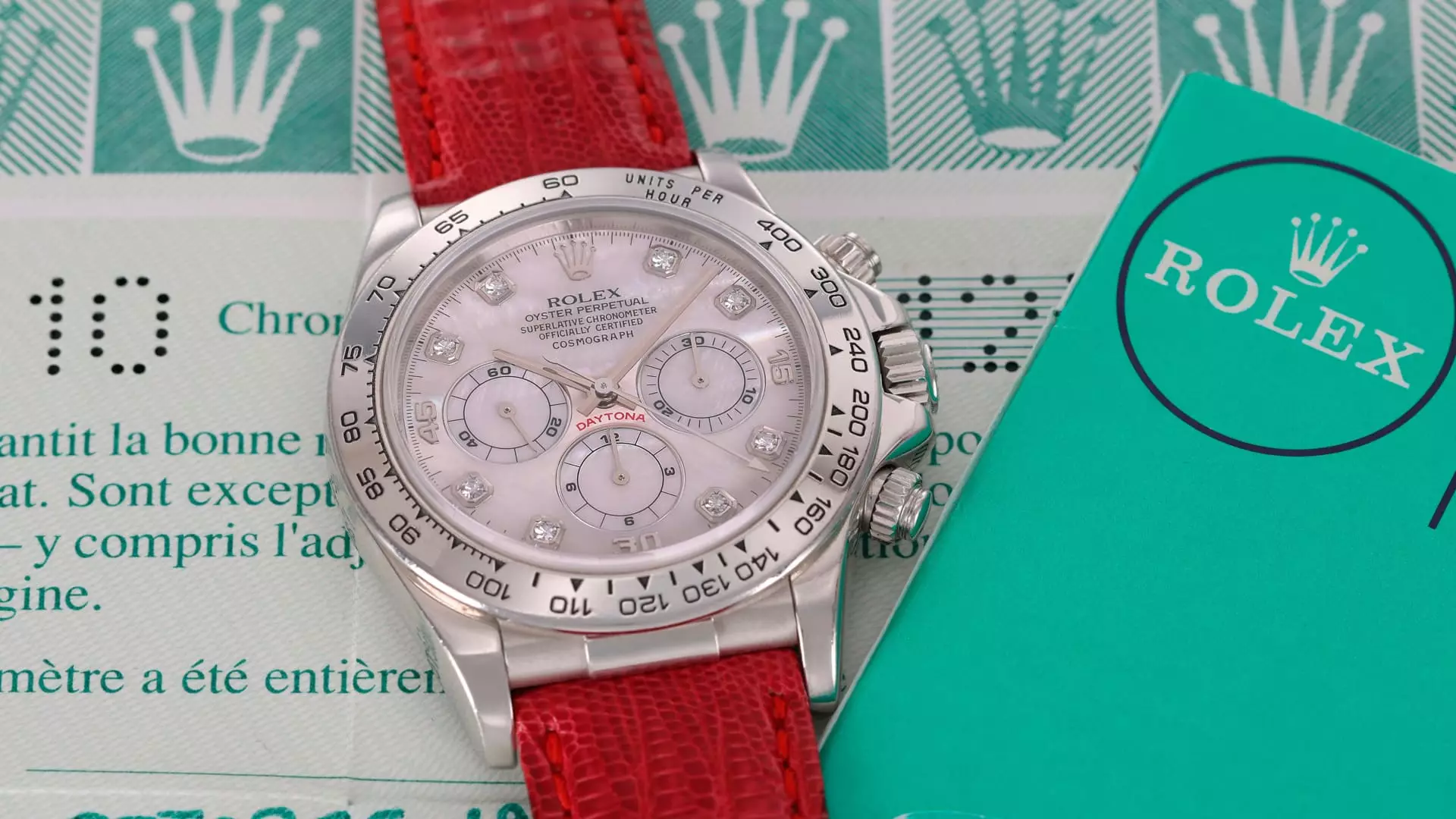In the realm of haute horlogerie, few pieces embody the ethos of luxury and rarity as compellingly as a 1999 platinum Rolex Daytona poised for auction at Sotheby’s Geneva. This isn’t merely a watch; it’s a tale of opulence interwoven with the fabric of rare craftsmanship. Valued at a staggering estimate of up to $1.7 million, this timepiece makes for an incredible case study on both the shifting landscape of luxury investments and the stories that our possessions tell. With its unique mother-of-pearl face accented by ten radiant diamonds, the Daytona stands as an anomaly within Rolex’s storied history. It’s a limited edition with a backstory often bathed in myth and speculation.
A Custom Commission: A Rare Bird in the Rolex Fold
The very nature of this Daytona sets it apart from other Rolex offerings. Most pieces from the brand are produced within the strict confines of regular collections, yet this watch was a privately commissioned masterpiece—hardly a common practice for a brand synonymous with uniform perfection. Pedro Reiser, a senior watch specialist at Sotheby’s, highlights the rarity of commissioned Rolex models, signaling a luxury universe that usually shies away from individualized requests. In a world that increasingly craves uniqueness, this reluctance to embrace bespoke pieces only adds to the mystique of the Platinum Daytona.
While there are only four known variants made for the same family, this upcoming auction will feature the last one with its diamond-set dial—a mark of elegance that further elevates its desirability. It begs the question: why has Rolex chosen to maintain such a tightly sealed vault around custom orders? It unearths a curious tension within the brand, balancing traditional craftsmanship with the evolving expectations of a new generation of consumers.
The Whispered Legends of Patrick Heiniger
What makes this timepiece even more intriguing is its potential connection to Patrick Heiniger, the legendary CEO of Rolex from 1992 to 2008. His tenure was characterized by massive growth and a veiled operational policy, which has propelled the brand into a bastion of prestige. According to rumors, the CEO might have commissioned a similar platinum Daytona or even worn one, adding an aura of speculation to its legacy. However, Reiser aptly cautions against treating these legends as gospel truth while acknowledging that there’s something almost cinematic in how these narratives shape perceptions of the watch.
Rumors often shape the allure surrounding luxury objects, and in an age of social media and virality, these stories can either inflate or deflate a product’s perceived value. With Rolex resting on its solid foundation of exclusivity, could this watch be a product of its era—an example of how narratives can be as valuable as the objects themselves in the luxury market?
Investment or Indulgence? A Shifting Perception of Watches
The question that looms is whether watches are becoming commodities rather than emotional acquisitions. Collectors today, especially those under 30, are increasingly viewing fine timepieces as potential investments. Knight Frank’s index reports that rare watches have soared over 125% in value in just a decade. This brings up an essential debate: Are we losing the heart of what makes luxury enjoyable in favor of financial speculation? The watch community is beautifully diverse, yet it is being pulled toward this new horizon where pieces are as much about fiscal returns as they are about artistry and personal expression.
As demand intensifies, driven by international buyers and a new generation eager to assert their status through these time-honored brands, questions about the future balance of indulgence and investment linger. The Daytona model, emblematic of Rolex’s blend of historic craftsmanship and contemporary desirability, poses both a risk and an opportunity for collectors: to treasure an extraordinary piece of artistry, or to stash it away as a financial asset.
As the legendary platinum Daytona prepares to hit the auction block, it carries not just a price tag but a wealth of narrative potential. Far beyond its monetary value, it serves as a crossroads of tradition, modernity, and speculation within the luxury consumption landscape. The transformation of such a revered piece into an investment vehicle raises critical questions, not only about luxury goods but about what we value in a world increasingly dominated by financial imperatives.

